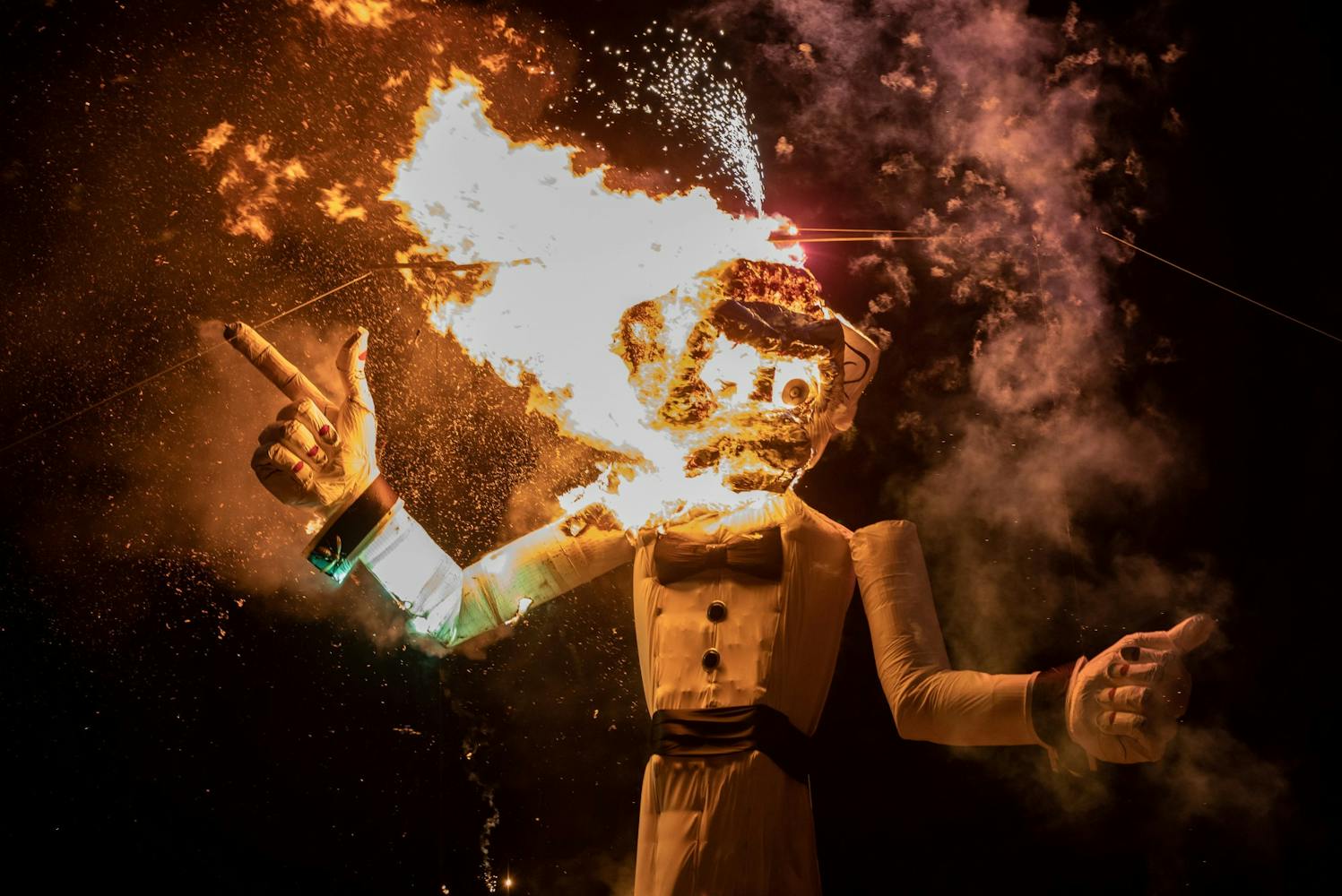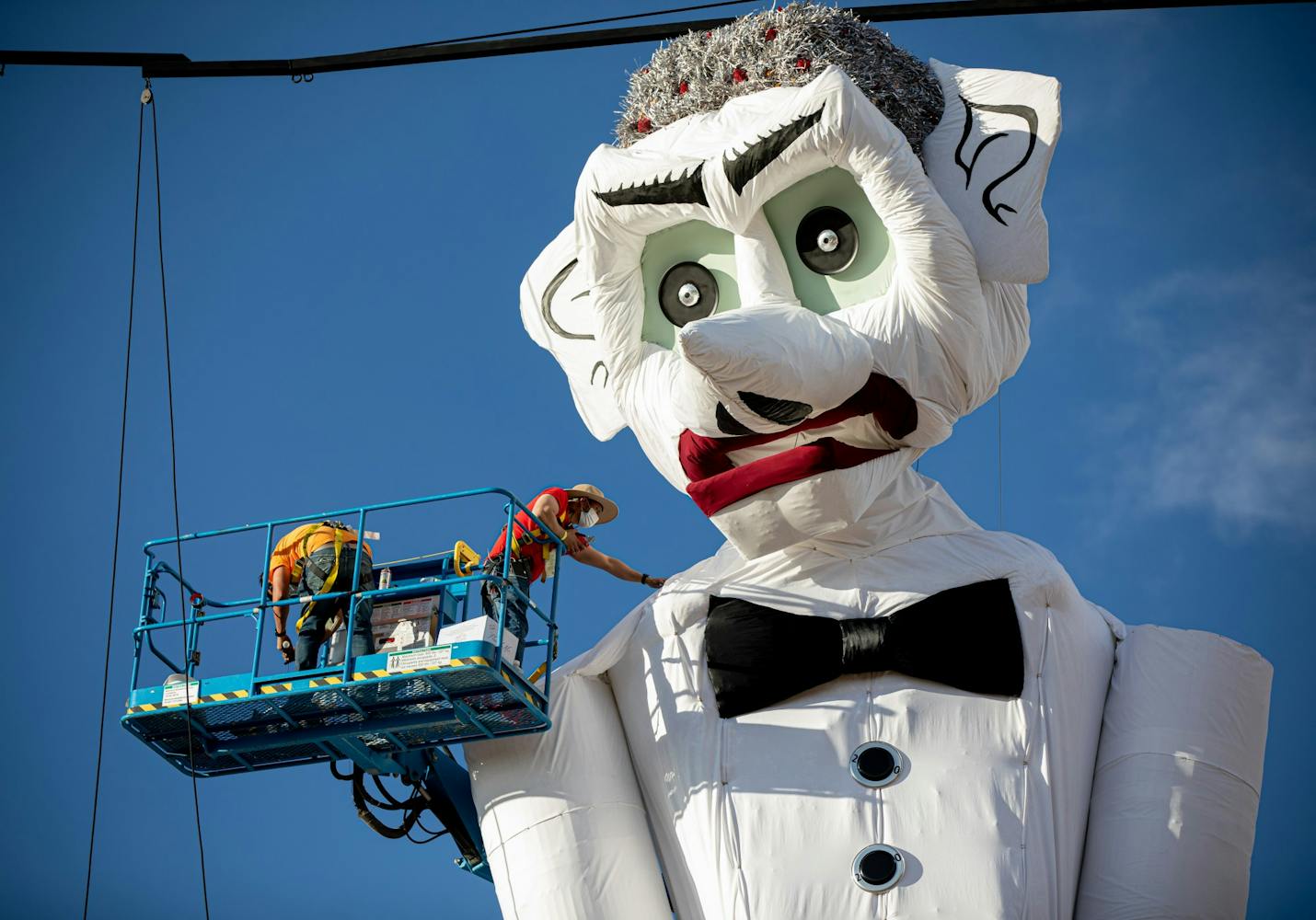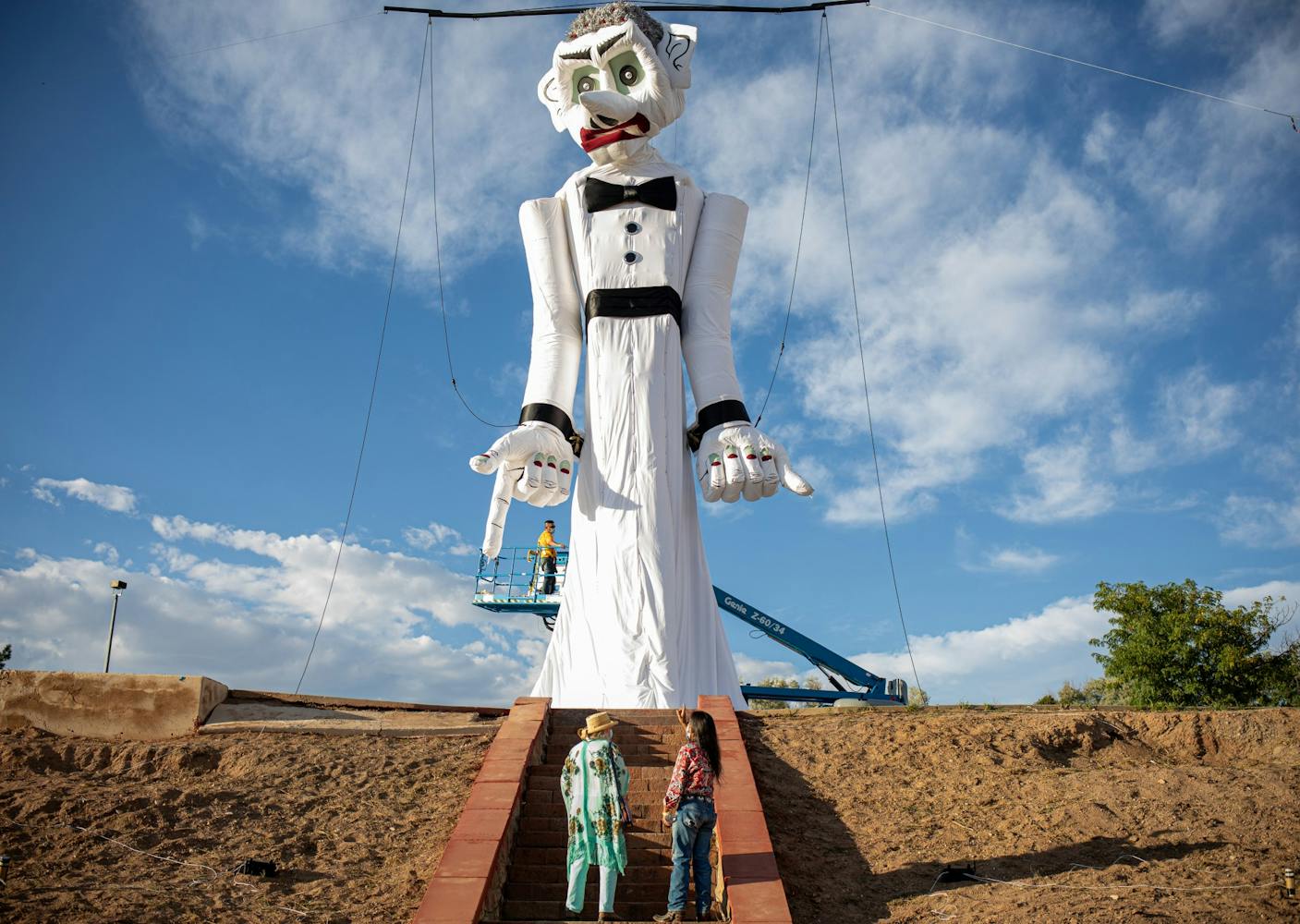SANTA FE — Zozobra and the shredded gloom of 2020 stuffed inside him burned away for the 96th time on Friday, Sept. 4, this year in front of a nearly empty field due to the coronavirus pandemic.
“If there ever was a year that deserved to burn, it's 2020,” Santa Fe Mayor Alan Webber said as he kicked off the Zozobra live broadcast.
“Old Man Gloom” — a 50-foot marionette of gloom incarnate — burns every year at Fort Marcy Park in Santa Fe in a storm of fireworks and flames.
Zozobra dressed to meet the moment, his grey hair speckled with spiky red proteins of coronavirus and his sleeves fastened with murder hornet cufflinks. And so did the torch bearers, wearing blue scrubs and masks.
Zozobra is the “accumulation of all the things we’ve done wrong,” deputy event chair Judith Moir said.
This year, a smattering of some 50 journalists, a few Santa Fe city councilors and a couple dozen volunteers and performers provided meager crowd reactions in comparison to the 64,000 people that attended in 2019, according to the official Zozobra website.
Usually as the ceremony begins, the crowd would jeer at Zozobra and cry “Burn him!” in thunderous unison.
The ceremony would be “competing with the sounds of the crowd,” UNM student Noah Dowling-Lujan said, who last attended in 2017 with friends.
But, the jeers of the offstage performers and several confident journalists couldn’t rise to the levels demanded by Zozobra’s deep growls and guffaws in this year’s edition.
Zozobra was full of “glooms” -- anxieties, regrets and disappointments — that people submitted online to be burned at the event. Gloom submissions came from every U.S. state and numerous countries, including Canada, Germany and the Philippines, according to the site’s gloom map.
The Kiwanis Club of Santa Fe, a nonprofit centered on serving children, decided that a no-crowd burning would be the safest way to carry on the tradition, according to a press release signed by event chair Raymond G. Sandoval on Sept. 3.
The burning of Zozobra has historically been a communal event, ever since William Shuster — the creator of Zozobra — held the first burning for his fellow artists in 1924. The Kiwanis Club tried to capture the original spirit of the event by having KOAT broadcast and live stream the burning, as well as inviting journalism outlets to attend in person. Several watch parties popped up in Santa Fe and Albuquerque.
Get content from The Daily Lobo delivered to your inbox
“It’s got an even more significant power than other years,” UNM student Alana Williams, who has attended numerous burnings, said in reference to the upheaval and turmoil of 2020.
In previous years, “you see a lot of people you know,” Linnea Romero, a UNM student and Zozobra volunteer, said. The burning is always very “community driven,” according to Romero.
Between snapping shots and flagging down officials for interviews, the journalists mingled with colleagues, old and new — a trace of the communal setting of burnings past.
“People come together and set (sadness and gloom) aside and have a good time,” said Williams, who remembered the long walks to the park, sometimes in the rain, as a “part of the vibe” of Zozobra.
After Zozobra’s lolling frame went limp and collapsed into a smoldering pile, the firework finale began to Maroon 5’s “Memories,” the Beatles’ “All You Need Is Love” and Journey’s “Don’t Stop Believin’.’” A zia symbol and the word “together” illuminated, marking the end of the burning.
Gabriel Saiz is a freelance reporter at the Daily Lobo. He can be contacted at culture@dailylobo.com or on Twitter @GSaiz83








